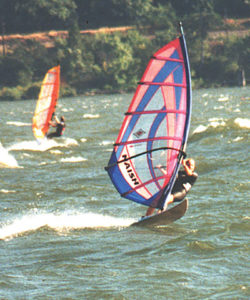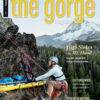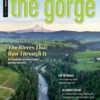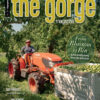Like so many others over the last few decades, I first came to Hood River for the wind. I’d finished college and was floundering around for direction. When I didn’t find it at a “real” job, working in a law firm with an eye toward law school, I decided to take a summer off, move to Hood River and learn to windsurf. I lived in a two-bedroom house—one bedroom being a drafty enclosed porch—with one bathroom and five other people. We called it the Grim House, and it lived up to the name. I borrowed a board—a clunky but indestructible Tiga—and bought a couple of used sails at Windance. I spent a lot of time at the Hook struggling to learn how to waterstart and worked at a friend’s food cart parked at the Marina. On paper, it wasn’t much. But it turned out to be one of the best summers of my life.
What followed were two more summers. More and better gear. Slightly better houses, still with many roommates. Similar jobs. At some point, I knew simply that this was it for me. Not the houses or the jobs sought to give the most time on the water or the pure stoke with every waterstart, and then jibe, and then jump I nailed. No, here was it for me. I would live here, with the wind and the water, and figure out the rest.
I’ve heard many versions of the same story over the years. Writer Chris Van Tilburg has his own version, and takes us on a wonderfully fun, historical journey through several decades of wind and water sports in the Gorge, beginning on page 54. His story is our story. In the end, so many of us who came here for the wind ended up staying for many other reasons. But the wind and the water hold sway over us still, and we wouldn’t have it any other way.
Writer Peggy Dills Kelter takes us on another journey, this one through the more than 90-year history of the Hood River-White Salmon Bridge (page 42). The bridge is often taken for granted by those of us who use it frequently. Sometimes it’s vilified. (The toll! The one-lane closures! The narrow lanes!) But when it opened in 1924, it simplified life for Gorge residents, who no longer had to take the small ferry across the river. The bridge has undergone many changes over the years, and a great deal more are in store. But I, for one, feel a bit more affinity for the bridge now that I know more about it. (We extend our gratitude to Arthur Babitz and the History Museum of Hood River County for providing us with so many wonderful historic images of the bridge.)
This being summer, there’s a whole lot more in here—including a story on the Hood River Cherry Company (page 26), a piece on the Naish Columbia Gorge Paddle Challenge (page 66), and a tour of the Lyle wineries. We hope you enjoy the long summer days in the Gorge—in the wind, on the water, or wherever you find joy in this special place.
—Janet Cook, Editor








